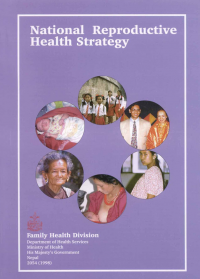नेपाल ई-हेल्थ रणनीति २०७४ (Nepal e-Health Strategy 2017)
नेपाल ई-हेल्थ रणनीति २०७४ (Nepal e-Health Strategy 2017)
नेपाल ई-हेल्थ रणनीति २०७४ (Nepal e-Health Strategy 2017)
The past three decades have witnessed some impressive advances in leprosy control. Elimination as a public health problem (i.e. registered prevalence below 1 per 10 000 population) was achieved in all countries1. The agenda of eliminating leprosy at the subnational level is still unfinished in many countries and will therefore continue to be pursued in the coming years.
Every year globally, an estimated four million babies die before they reach the age of one month. Nearly the same numbers die in late pregnancy or are stillborn and these deaths are rarely recorded. Millions more are disabled because of poorly managed pregnancies, deliveries and neonatal care. Deaths are far more likely to occur early in the neonatal period. This has been neatly summarized as the “two thirds rule” which states that approximately 2/3 of all deaths in the first year of life occurs in the first month of life. Of these deaths, approximately 2/3 occurs in the first week of life. Of these deaths, approximately 2/3 occurs in the first day of life.
HIV in Nepal is characterized as concentrated epidemic. More than 80 percent HIV infections spread through heterosexual transmission. People who inject drugs, female sex workers (FSWs) and men having sex with other men (MSM) are the key populations at higher risk spreading the epidemic. Male labour migrants (particularly to HIV prevalence areas in India, where labour migrants often visit female sex workers) and clients of female sex workers in Nepal are acting as bridging populations that transmit infections from higher risk groups to lower risk general population.
National Strategic Plan (2006–2011) aims to contribute directly to the Millennium Development Goal (Halt and begin to reverse the increasing trend of HIV by 2015) through numbers of key strategies for Prevention; and Treatment Care and Support. Keeping in view of current low coverage and access to services, insufficient focus to treatment care and support as well as inadequate link between prevention and treatment care and support, the NSP (2006 – 2011) is designed in line with Universal Access target of 80% coverage with prevention, treatment, care and support services to Most-at-risk population and People living with HIV and AIDS. The NSP (2006 – 2011) is developed within the broader framework of the National HIV and AIDS Policy and 11-point guiding principles.

Reproductive Health (RH) is a state of complete physical, mental and social well being and not merely the absence of disease or infirmity. Reproductive Health therefore, implies that people are able to have a satisfying and safe sex life and that they have the capability to reproduce and have the freedom to decide if, when and how often to do so. Implicit in this last condition are the rights of women and men Reproductive Health (RH) is a state of complete physical, mental and social well being and not merely the absence of disease or infirmity to be informed of, and to have access to safe, effective, affordable and acceptable methods of family planning of their choice, as well as other methods of their choice for regulation of fertility which are not against the law.